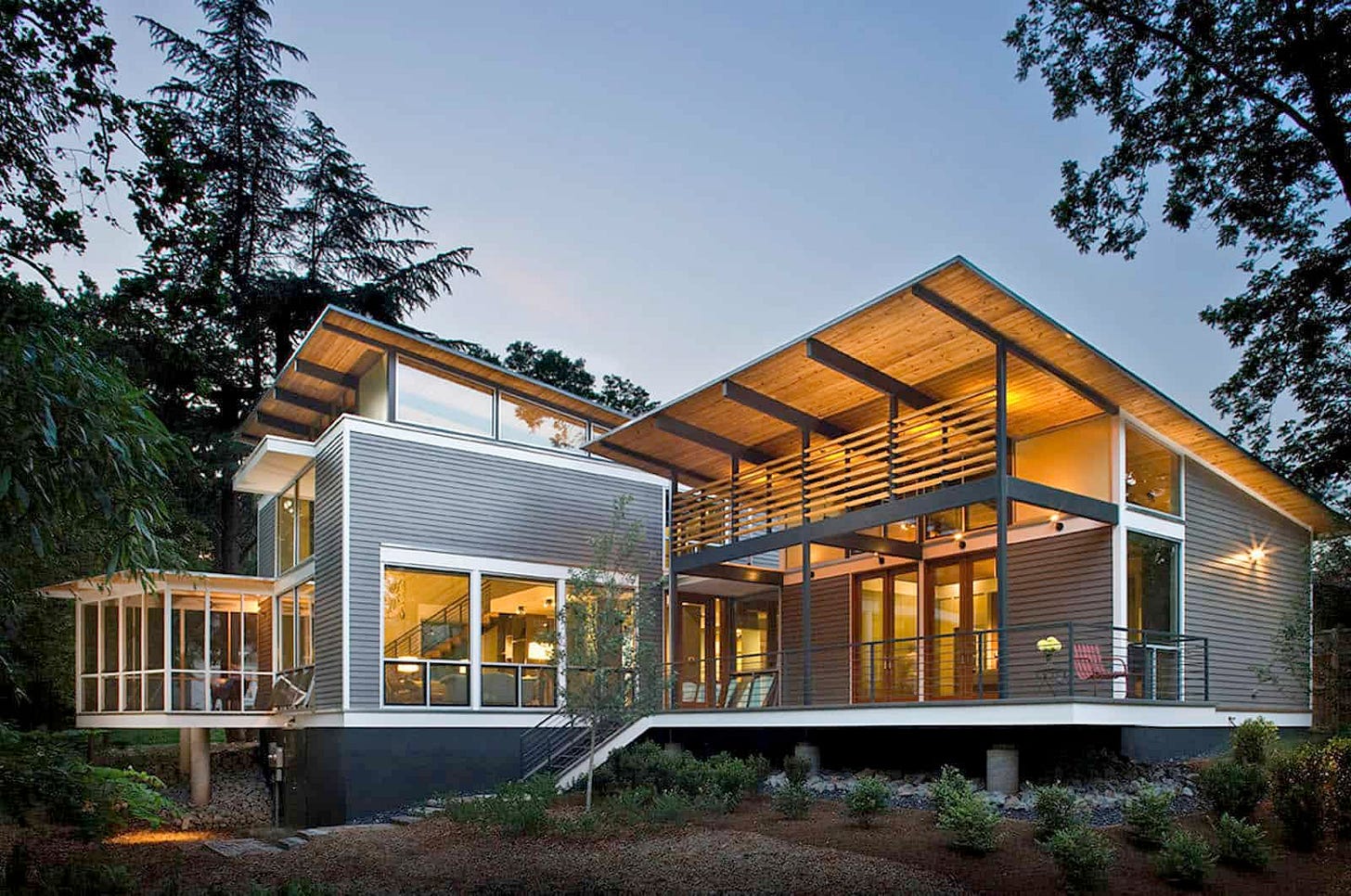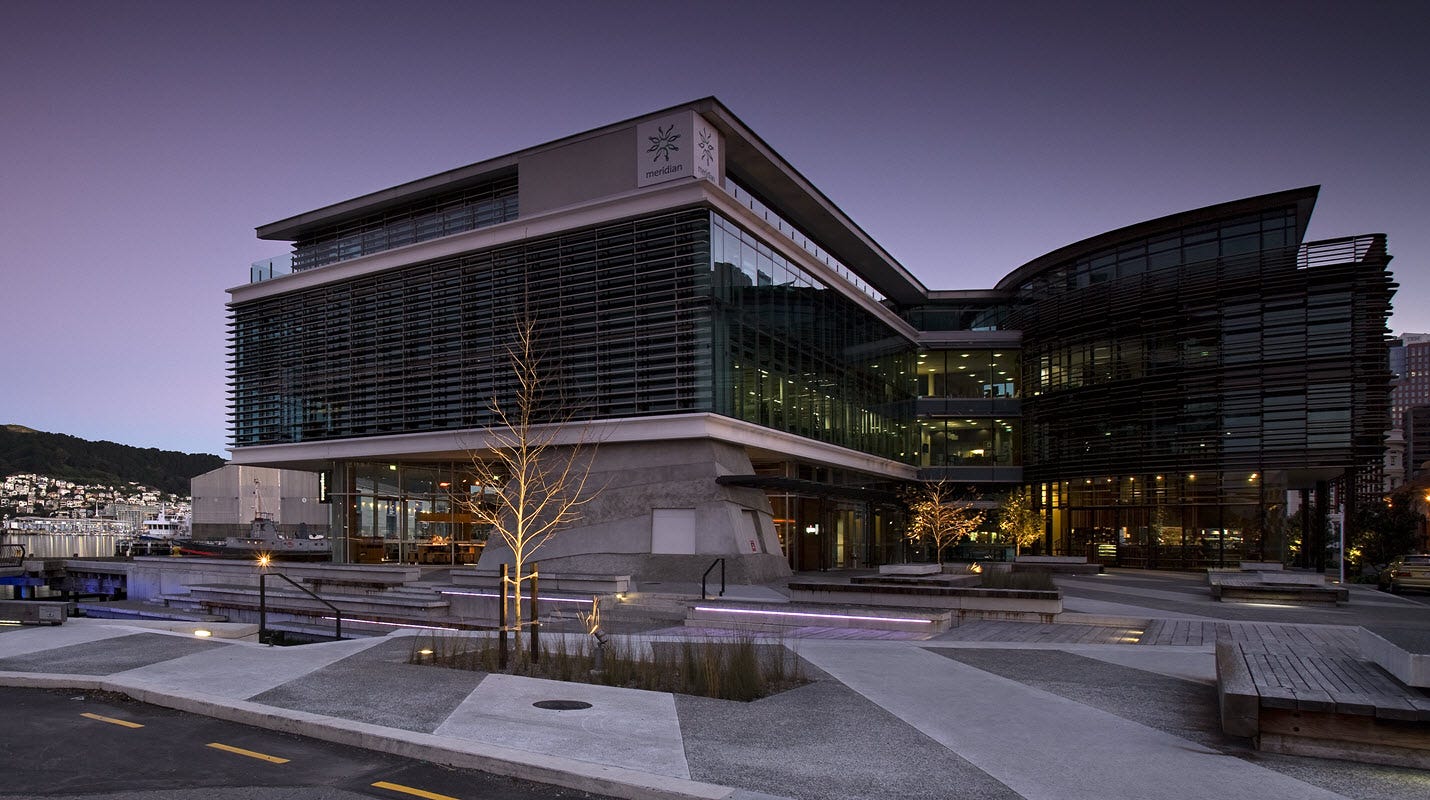How to certify a "Green" structure
A closer look at third-party efficiency rating structures for residential and commercial buildings. (I promise it's not as boring as it sounds)
As I mentioned in my last article, one very important aspect of the sustainable building movement has been the inclusion of third party certification. This process allows the designers, architects, and tradespeople to prove that they actually know what they are doing, and that there was no corner-cutting involved in the build. Sure, you can plan and execute everything and say that the building meets all the standards for airtightness and runoff mitigation, but when winter comes and the home is not performing as advertised, you are going to have some very unhappy clients.
There are numerous different ways to go about getting a building certified, as well as many different descriptions and categories of what a sustainable building should be able to do. For our purposes I am going to focus on the ones that are most commonly used in the United States and New Zealand, as this is where my experience will be focused.
USGBC: Leadership in Energy and Environmental Design (LEED)

The United States Green Building Council (USGBC) is a non-profit organization that developed the LEED rating system, and aims to create sustainable living and working environments for everyone. Started in 1993, LEED has become the most widely used certification system for green buildings in the world, reaching 167 countries. Because it is used so widely, the LEED system can be adapted for the unique climate setting in which the structure will exist. The USGBC has been developing the system over the years, which is necessary to keep it current and applicable to new building codes. Now in its fourth version, LEED v4.1 uses a point system that compares the structure being built to a hypothetical building of the same size constructed with conventional methods and materials.
There are four levels of LEED Certification:
Points can be accumulated throughout the entire process of creating the building, starting from the design and orientation of the building, all the way through the type of paint being applied to interior walls, and even the location and landscape around the building. US Department of Energy studies show that even at the base level LEED Certified buildings use 25% less energy, emit 34% less CO2, and use 11% less water than conventional homes do, with these numbers increasing as higher levels of certification are achieved. Energy usage is clearly the main focus of the LEED system, as the most points can be scored by choosing passive heating and cooling systems, efficient HVAC systems, and insulation with above average R-values.
Crucially, LEED is not limited simply to energy and water use. There are also points to be scored for quality-of-life improvements to the interior of the building, like choosing reclaimed materials, low/no VOC paints and finishes, as well as humidity control in order to prevent mold growing inside the home. All of these factors add up to a new building that is far more durable, and much healthier not only for the occupants, but for the tradespeople that built it. Strangely enough, the trades required to build a home are considered very dangerous, with carpenters, painters, and laborers having much higher than average work-related injury and death rates. LEED also seeks to reduce risk for tradespeople by requiring safer materials and methods.
The LEED rating system also goes farther than just new buildings. There are compliance schemes for many forms of development like existing buildings, office buildings, interiors, and even entire neighborhoods and cities. This is also a very important aspect of the system because generally, building a new home or office space is not considered to be sustainable, mainly because there are new raw materials being used, waste being created, and CO2 being emitted to transport said materials to and from site. That is why LEED offers certification of existing structures, because the retrofit of an existing building is a far more sustainable choice than building a new one.
NZGBC: Homestar, Green Star, and NABERSNZ

Unlike the United States, where LEED has been operating for over twenty years, third party certification schemes have only been implemented in New Zealand fairly recently, as of 2005. In similar fashion however, the New Zealand Green Building Council (NZGBC) has set out with a mission to make “all homes and buildings in Aotearoa green and sustainable, making healthier, happier New Zealanders.” NZGBC also wants to implement green building standards into the actual building codes in New Zealand, which they feel are “woefully” outdated and do not provide a good quality of living for the average person. Although this appears to be an uphill battle, changes are slowly being made, and the culture around sustainable building is gaining and increasingly steady foothold.
Both the Green Star and Homestar systems were developed by the Green Building Council Australia, and have been suitably adapted to the climate and environment of New Zealand. These two programs are focused on the sustainability and efficiency of new residential and commercial buildings, and also use a points-based system to award different levels of certification. According to the NZGBC, the build environment in New Zealand uses up to 20% of the total energy consumed in the country and a large portion of that is simply wasted by drafty and inefficient buildings. Another similarity to the LEED system is the overall focus on a holistic approach to building, making each phase of the planning and building process add up to a less wasteful outcome.
The Homestar rating scheme looks slightly different to the LEED system, however it functions the same way, using a points-based rating system to award homes a score from six up to ten, with six being the lowest threshold for certification, and ten being considered “world leadership” in design and energy efficiency capabilities.
The Green Star system which is aimed at certification of “every commercial building type; from schools and hospitals, to office buildings, shopping centers, and industrial warehouses” uses a point based ranking scale similar to LEED:
A fantastic example of an upcoming project using the Green Star system is a new wing being added to the Taranaki Base Hospital, which will be the first of its kind in New Zealand and is on track to achieve a 5 Green Star Rating.
The last system I want to talk about is National Australian Built Environment Rating System for New Zealand (NABERSNZ). I think this one is also very important because of the number of large office buildings that we have in the developed world. NABERSNZ is a program that assesses the operations of existing buildings. It examines the energy usage of core building functions like HVAC, lighting, and access services like elevators. The entire building is monitored over a 12 month period and at that point recommendations can be made to increase the overall energy efficiency of the building, simply by changing insulation, upgrading air conditioning units, and others.
Another interesting aspect of NABERSNZ is that not only does it apply to existing buildings, but the NZGBC is recommending that all new office building be certified to at least a NABERS 5 Star rating, that way they are future-proofed in a sense, and the tenants can expect a high quality and efficient building to occupy.

“Remember kids, the only difference between screwing around and science is writing it down.” - Adam Savage 2012
References:
https://onekindesign.com/2021/04/08/leed-platinum-home-butterfly-roof/
https://www.stuff.co.nz/life-style/homed/houses/104827988/first-9-homestar-house-completed-why-is-it-so-much-better
https://www.beca.com/about-us/news-and-awards/january-2018/wellington-building-obtains-new-zealand%E2%80%99s-first-6-star-rating
Schifman, M. R. (2018). Building a sustainable home: Practical green design choices for your health, wealth, and soul. Skyhorse Publishing.
https://www.usgbc.org/about/brand
https://www.nzgbc.org.nz/about-us-and-membership/our-vision







